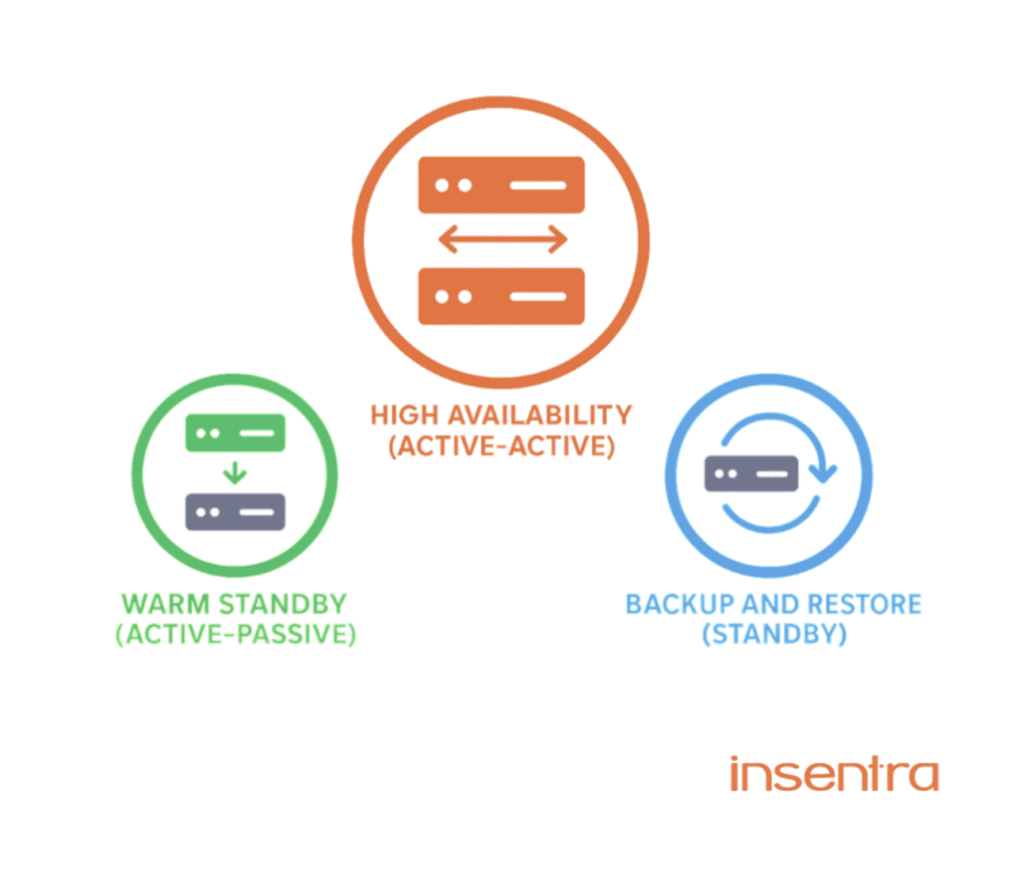8 am: Staff access to the environment, but servers are unresponsive, business applications are not launching, alerts are flooding. Within minutes, your team scrambles to diagnose the issue, but the impact is already rippling across the business. Does it ring a bell?
Moments like this are no longer rare they’re inevitable. Cyberattacks, data corruption, natural disasters, and infrastructure failures are becoming increasingly common multiple threats. The question is no longer if disruption will occur, but when. This reality has elevated the importance of robust continuity planning, and with it, the debate between Disaster Recovery (DR) and IT Resiliency.
A vast majority of leaders, in fact 93% express concern over the financial and operational consequences of service outages, while 95% acknowledge existing vulnerabilities in their operations that could expose them to risk. 48% of enterprises admit they aren’t doing enough to improve resilience,1 and 61% of executives expect risk levels to increase significantly in the next 3–5 years.2
First, let’s understand the Difference between Disaster recovery and Resiliency
Disaster Recovery (DR) traditionally refers to the reactive process of restoring systems and data after a disruptive event. It’s focused on Recovery Time Objectives (RTO) and Recovery Point Objectives (RPO) how quickly systems can be restored and how much data loss is acceptable.
IT Resiliency, on the other hand, is a proactive approach. It’s about continuous availability, automated failover, and architectural robustness. Resiliency aims to prevent downtime altogether, not just recover from it.
While DR is about surviving the storm, resiliency is about thriving through it.
Budget vs. Business Impact: Finding the Balance
Choosing between DR and resiliency isn’t just a technical decision it’s a strategic one and both are complementary. Organizations must weigh risk appetite, cost constraints, and business criticality.
A 3-tier strategy can be implemented:
- High Availability (Active-active),
- Warm standby (Active-Passive) and
- Backup and Restore (standby)

The Role of MapOne: Strategy Before Solution
Too often, organizations jump into DR or resiliency planning by selecting tools before defining their why. This leads to fragmented implementations, overspending, or under-protection.
Insentra’s MapOne consulting flips this approach. It’s a one-page strategic IT roadmap that helps organisations:
- Understand their current state—functionally, operationally, and commercially
- Define clear business outcomes
- Align technology decisions with strategic goals
- Avoid vendor-driven confusion and indecision
MapOne empowers IT leaders to make the right decisions for the right reasons, at the right time.
Real-World Applications
Insentra has implemented DR and resiliency strategies across various sectors:
- Energy industry: A scoped DR strategy aligned with managed services and budget constraints, involving technical workshops, failover testing, and stakeholder coordination
- Tertiary industry: A progressive DR model using ASR for critical workloads, with annual simulations and staged implementation to match transformation phases
- Health industry: Azure DR region replication and failover testing, with technical handover and knowledge transfer built into the project lifecycle
These examples show how Insentra tailors DR and resiliency to fit both technical needs and financial realities.
Conclusion: Strategy First, Technology Second
Whether your organization is ready for full resiliency or needs a cost-effective DR solution, the key is strategic alignment. Don’t let budget constraints lead to underpreparedness or overspending on unnecessary tools.
MapOne consulting from Insentra offers the clarity and structure needed to define your strategy, build your roadmap, and choose the right solution for your budget.
Contact Insentra today to schedule your MapOne consultation and take the first step toward a smarter, stronger continuity strategy.
Source:
1 The State of Resilience 2025: Confronting Outages, Downtime, and Organizational Readiness
2 KPMG Risk and Resilience Survey: The Stare of Risk management and resilience











